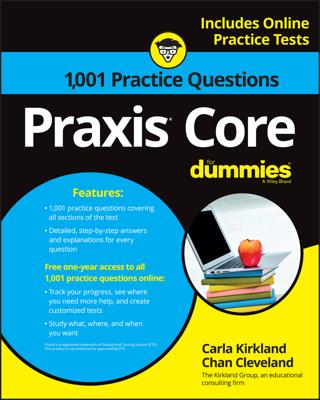The standard five-paragraph essay is an excellent way to organize an essay for the Praxis Core, and this method is the most frequently taught form of writing in the classroom. You may find, however, that only one or two middle paragraphs are sufficient to fully develop your thesis.
Making an outline: Essential or overrated?
Although a formal outline isn’t necessary, getting organized is essential. After you’ve read the directions and the prompt, restate the prompt in your own words. Be sure you understand what the prompt is asking you to do.
If you’re writing the argumentative essay, think about your viewpoint. If you’re working on the informative/explanatory essay, read the source material. Then, for either essay, formulate a rough thesis.
Next, take a mental inventory. What examples or experiences can you relate to the topic? Write them down. In what order will you arrange these supporting details? Number them. Reread the prompt. Are your supporting details relevant? Make adjustments and rewrite your thesis, if necessary. You should spend no more than five to seven minutes on these tasks.
A common maxim regarding essay writing is, “Tell them what you are going to tell them, tell them, and then tell them what you told them.” Although a bit simplistic, this is still good advice to keep in mind when you’re organizing your writing.
Looking at the sections of your essay
Keep in mind that good writing of any kind requires an excellent thesis, topic sentences, and well-organized supporting details as well as a strong conclusion.
Here’s a breakdown of how to structure each paragraph in your essay:
First paragraph
Craft a short introduction.
State your position, which is your thesis. (Here’s your chance to make a good first impression. Best foot forward!)
Middle paragraphs
Begin with a topic sentence related to your thesis.
Provide specific examples, details, and/or experiences. Explain why these are important and how they relate to your thesis. If you’re working on the argumentative essay, what benefits can occur as a result of your point of view?
End each paragraph with a strong final sentence relating to the thesis.
Read the prompt again to be sure everything you wrote relates to it!
Conclusion
Put a bow on it! Tie up your ideas into one neat package. Avoid merely summarizing.
Restate your position if this is the argumentative essay.
Sum up the supporting details.
Drive your point home.
Works Cited
List the sources to which you refer in your essay.
Be sure to format your sources properly.
After you have organized your thoughts, begin writing your essay. Be sure to save the last four or five minutes to proofread, correcting spelling and grammar.
Don’t box yourself in: Theses aren’t set in stone
After you’ve written your thesis and begun to develop it in your middle paragraphs, you may find that an adjustment is in order. You may discover while writing your examples or experiences that your thesis statement has evolved and could be better.
Write your revised statement. After you’ve completed your essay, revisit your revised thesis and reread the prompt. If your revised thesis is better, change it.
Citing the sources
When you write the informative/explanatory essay, you must cite any outside sources you quote or paraphrase. You can cite sources within the body of the text several different ways:
You can cite a source by including the author’s name in the sentence you are writing. Be sure to use quotation marks when quoting directly.
According to Mary Lucas, “Children learn best by doing.”
If you paraphrase, you must still cite your source:
Mary Lucas believes that children can learn best by doing.
You can cite a source by writing the last name of the author in parentheses at the end of the sentence before the period:
Children learn best by doing (Lucas).
At the end of your essay, include a “Works Cited” section. Generally, the works cited section should include the name of the author (last name, first name, and middle name or initial), the name of the article (if appropriate), the name of the publication, the city of publication, and the year of publication for each source used. The following list provides generic templates for various types of sources:
Books: Author’s last name, first name and middle name/initial. Title of Book. Place of publication: Publishing company, year of publication.
Encyclopedias: Author’s last name, first name and middle name/initial. “Article Name.” Title of Encyclopedia. Year of edition.
Magazines: Author’s last name, first name and middle name/initial. “Article Name.” Title of Magazine. Day of month (if applicable) Month year: page number(s) of article.
Websites: Author’s last name, first name and middle name/initial. “Title of Article/Document.” Title of Site. Ed. Name of editor (first name last name). Date of publication or most recent update. Name of organization associated with site. Date of when you accessed the document. <http://www.websiteaddress.com>
Checking out some additional writing pointers
Here are some general, but important, tips to keep in mind as you write your essays:
Be careful to address only the assigned topic. Don’t wander off course — no sudden left turns.
Don’t leave anything out. Address every point, but be concise. Be specific; make every word count.
Provide clear support for your points. Imagine that for every point you make, someone asks, “So what?” Be sure you have an answer. Doing this keeps your writing relevant.
Pay attention to grammar, usage, and mechanics. Errors here will cost you points.
Use transitions to make your words flow from idea to idea and paragraph to paragraph.
Vary the length and structure of your sentences.
Avoid passive voice. Use active verbs whenever possible.
Include correct citation, whether you paraphrase or quote directly from the source.

